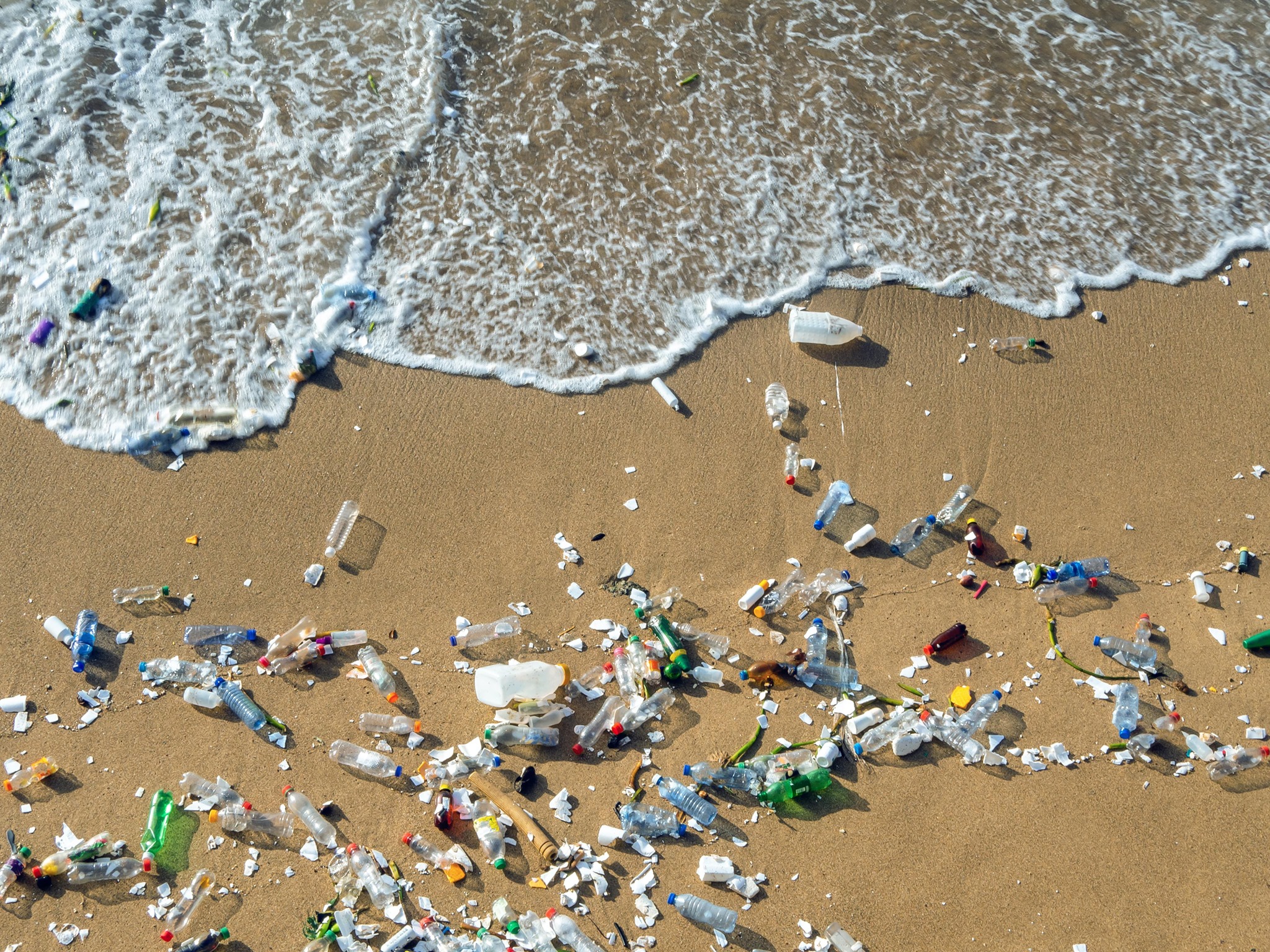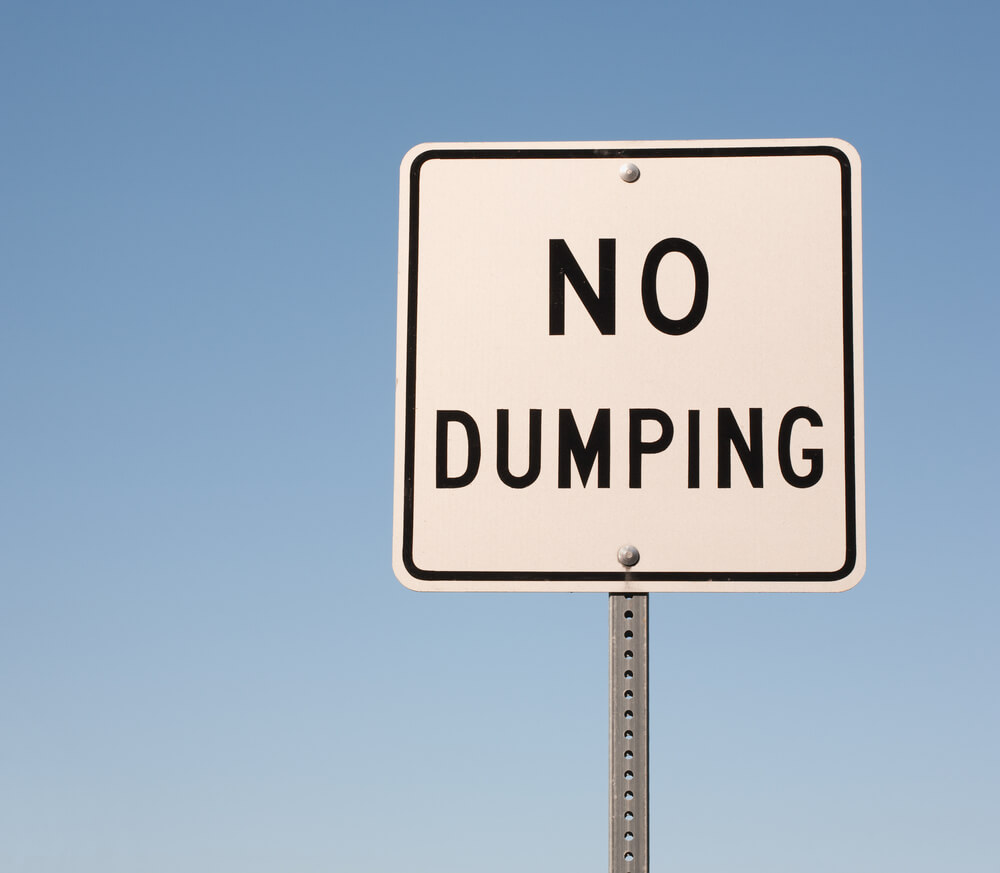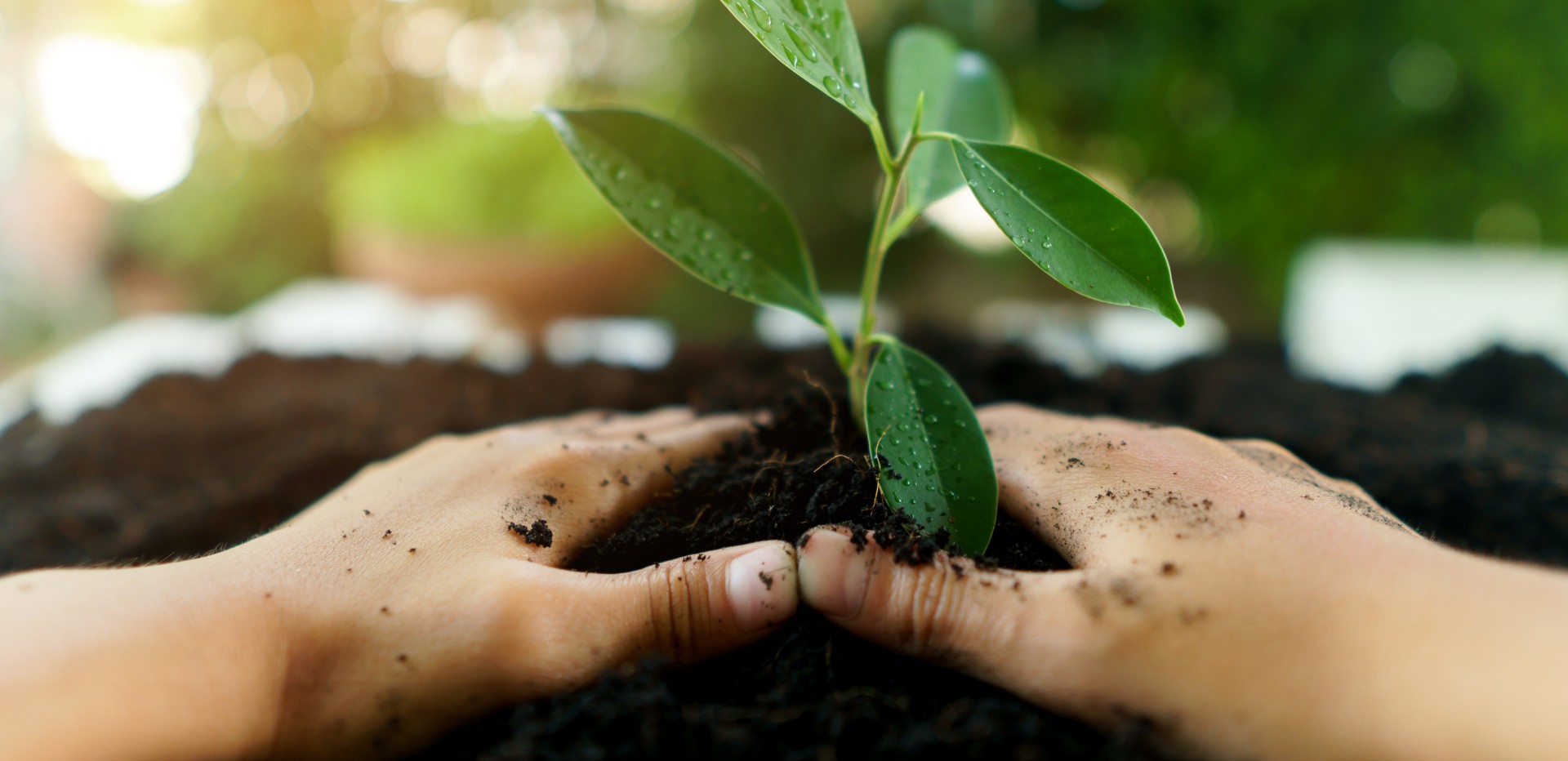Ocean pollution is a significant environmental issue that poses a serious threat to the health and well-being of our planet.
Oceans account for 70 percent of the surface of planet Earth and play a pivotal role in the health of our ecosystem — including land-dwelling animals like ourselves. According to the National Oceanic and Atmospheric Administration (NOAA), billions of pounds of trash and other pollutants enter our oceans every year.
The consequences of ocean pollution are far-reaching; ocean pollution is now tied to negative health outcomes in human health and marine ecosystems.
Let’s do a deep dive (pun intended) into exactly what ocean pollution is, what causes ocean pollution, the effects of ocean pollution and solutions for ocean pollution.
What is ocean pollution?
Ocean pollution — also called marine pollution — is a mixture of both chemical contamination and trash. The act of ocean pollution occurs when chemicals and trash are either washed, blown or intentionally dumped into the ocean.
What causes ocean pollution?
There are many causes of ocean pollution, but most (80%) of the pollution in our oceans originates on land and is caused by humans. Here are some of the major causes of marine pollution:
1. Nonpoint source pollution (runoff)
Nonpoint source pollution is the accumulation of pollution from small sources that can’t be exactly pinpointed. Examples include the pollution created by individual cars, boats, farms and construction sites.
Nonpoint source pollution typically becomes ocean pollution via runoff, which occurs when rain or snow moves pollutants from the ground into the ocean. For instance, after a heavy rainstorm, water flows off roads into the ocean, taking oil left on streets from cars with it. But wind can transfer dirt and other debris from nonpoint sources and deposit these pollutants on the ocean’s surface.
2. Intentional discharge
Manufacturing plants in many areas of the world release toxic waste into the ocean, including mercury. While it has been banned in the USA, sewage also contributes to ocean pollution. Meanwhile, plastic waste poses a particularly tough challenge; according to the Ocean Conservancy, eight million metric tons of plastic go into our oceans every year.
3. Oil spills
Ships are major contributors to ocean pollution, especially when crude oil spills occur. Crude oil lasts for years in the ocean and is difficult to clean up. You can find a history of oil spills on the NOAA site, but the largest one in recent history was, by far, the 2010 Deepwater Horizon well blowout in the Gulf of Mexico, which spilled roughly 134 million gallons of oil into the ocean.
4. Littering
Atmospheric pollution — a type of ocean pollution where objects are carried by the wind to the ocean — is often caused by littering. It includes single-use plastics (such as plastic bags) and styrofoam containers which can take hundreds of years to biodegrade. It is estimated that roughly 1 trillion plastic bags are used worldwide per year.
5. Ocean mining
Deep-sea ocean mining causes ocean pollution and ecosystem disruption at the lowest levels of the ocean. Drilling for substances such as cobalt, zinc, silver, gold and copper creates harmful sulfide deposits deep in the ocean.
Why is ocean pollution a problem?
Ocean pollution has many consequences that directly and indirectly affect marine life, as well as humans. Here are some of the most common effects of ocean pollution:
1. Harmful to marine life
Sea animals are frequent victims of ocean pollution. Oil spills, for instance, will ensnare and suffocate marine animals by permeating their gills. When the oil gets into seabird feathers, they may not be able to fly or feed their young. Animals that aren’t killed by crude oil may suffer from cancer and behavioral changes and become unable to reproduce.
Marine animals also mistake small plastic debris for food or become entangled in or strangled by plastic bags and discarded fishing nets. Animals most vulnerable to harm from plastic debris in the ocean include dolphins, fish, sharks, turtles, seabirds and crabs.
2. Depletion of oxygen in seawater
As excess debris in the ocean slowly degrades over many years, it uses oxygen to do so, resulting in less oxygen in the ocean. Low levels of oxygen in the ocean lead to the death of ocean animals such as penguins, dolphins, whales and sharks.
Excess nitrogen and phosphorus in seawater also cause oxygen depletion. When a great deal of oxygen depletion occurs in an area of the ocean, it can become a dead zone (see below) where very little marine life can survive.
3. A threat to human health
Pollutants in the ocean make their way back to humans. Small organisms ingest toxins and are eaten by larger predators, many of which are seafood that we eventually eat. When the toxins in contaminated animals get deposited in human tissue, it can lead to long-term health conditions, cancer and birth defects.
For example, phytoplankton will absorb methylmercury (bacteria-converted mercury carried down to the ocean’s surface). This makes its way up the food chain when zooplankton eat the phytoplankton, then small fish eat the zooplankton, then bigger fish eat the smaller fish. By the time you reach a fish the size of a swordfish, they can contain a very high mercury load (in fact, swordfish contain one of the highest mercury loads).
FAQs and facts about ocean pollution
How much pollution is in the ocean?
While the exact amount of pollution in the ocean is difficult to measure, one recent study estimates that the world’s oceans are polluted by roughly 171 trillion plastic particles that, if gathered, would weigh roughly 2.3 million tons. These microplastics (tiny plastic particles .2 inches or smaller) find their way into marine ecosystems and our water.
How does trash get into the ocean?
Trash winds up in the ocean due to littering, illegal dumping, poor waste disposal practices, stormwater discharge and extreme natural events like tsunamis. It’s not always intentional, but the debris comes from people with a majority of it originating on land first. Trash on land can enter waterways or be blown into the ocean and Great Lakes.
What is the Great Pacific Garbage Patch?
The Great Pacific Garbage Patch is a collection of litter — primarily microplastics — in the North Pacific Ocean and is actually composed of two separate large patches, the Western Garbage Patch (found near Japan) and the Eastern Garbage Patch (found between Hawaii and California). The GPGP is the biggest, but not the only, garbage patch; the Atlantic and Indian Oceans are home to trash vortexes and smaller bodies of water are also developing them.
What are Dead Zones?
Dead zones are areas of water where sea life cannot survive due to reduced oxygen levels. Dead zones result from nutrient pollution — a type of pollution created when runoff introduces excess nutrients like nitrogen and phosphorus — which encourages the growth of algae blooms. These algae blooms consume oxygen and block sunlight to oxygen-producing underwater plants.
How can I learn more about ocean pollution?
- Timelines: EPA ocean dumping management timeline and EPA Pollution Prevention Timeline.
- Books: Plastic Ocean by Charles Moore (who discovered the Great Pacific Garbage Patch) and Cassandra Phillips; Plastic Soup by Michiel Roscam Abbing of the Plastic Soup Foundation (has particularly stunning photographs). If possible, shop local to reduce your carbon footprint.
- Reports and Studies: The Organization for Economic Cooperation and Development (OECD)’s Global Plastics Outlook and Environment Working Papers; Pew’s Breaking the Plastic Wave; Annals of Global Health study on Human Health and Ocean Pollution and Commission on Plastics and Human Health.
Solutions for pollution in the ocean
Given the long-term, disastrous effects of ocean pollution, anything we can do to avoid contaminating our seas is a good idea. With a few small changes to our daily routines, we can all do our part to help reduce the amount of pollution going into our oceans. Here are some ocean pollution solutions that you can do to make a difference.
Reduce chemical fertilizer use
Excess chemical fertilizer eventually makes its way into the oceans. Choose organic fertilizers, which tend to be lower in nutrients, and use them at half strength or half as often as suggested.
Opt for reusable bottles and utensils
Single-use plastic bottles, eating utensils and straws, are massive ocean polluters. Rather than contributing to the threat to marine life, opt for reusable bottles and utensils. When using reusable bottles, BPA-Free or glass bottles are best. Reusable straws made from silicone or metal are great options to use as well. They get the job done, can be used multiple times and stay out of our landfills and oceans.
Properly dispose of plastics and other trash
One of the simplest ways to reduce ocean pollution is to properly dispose of plastics and other recyclable materials, so they don’t end up in the ocean. In outdoor spaces, such as beaches and parks, dispose of trash in a secure receptacle or take it home with you.
To help encourage proper disposal, we recommend downloading the TDS Waste Wizard App which allows you to input common waste items and learn how to properly dispose of them.
More actionable resources:
- Learn what is recyclable (for Central Texas residents in particular)
- Discover how to be an environmental steward
- Read our guide to how to reduce waste during the holidays
- Research types of composting and how to compost at home
- Teach your kids how to recycle
- Look into how to recycle plastic bags and other plastics
- Find out what also contributes to land pollution as well as ocean pollution
Texas Disposal Systems: Doing Our Part to Reduce Ocean Pollution
At Texas Disposal Systems (TDS), we recognize that we are in a unique position to help reduce ocean pollution for Texans. With over 2,000 acres of land near Austin, Texas and the state’s first totally integrated facility, we are one of the largest independently owned solid waste collection, processing and disposal companies in the nation. And we are dedicated to helping the Texas environment thrive.
In other words, TDS is much more than a waste service provider. Our efforts to reduce the impact of air pollution, marine pollution and land pollution are extensive and include
- Best practices in terms of landfill management and recycling
- Diverting reusable and recyclable materials from our landfill via our Material Recovery Facilities (approximately 440,100 tons per year!)
- Use of recycled materials in the construction of roads, buildings and topsoil initiatives across our facilities
- Large-scale, on-site composting
- Recycling and sales outlet facilities at our Citizens Convenience Center
- The planting of trees and shrubs throughout our facilities
- Supporting environmentally sound construction through our building services, including concrete recycling and more
- Working with local businesses and organizations, including the Barton Springs/Edwards Aquifer Conservation District, H-E-B, Austin-Bergstrom International Airport, Keep Texas Beautiful, Habitat for Humanity, Texas Athletics, Austin FC
- And so much more…
With an eye to the present and future health of Texans, TDS strives to give Texas residents and businesses access to more holistic waste disposal solutions.
Ready to get started? Learn more about our residential and commercial waste collection solutions, event solutions, builder solutions, restaurant solutions and more today.



